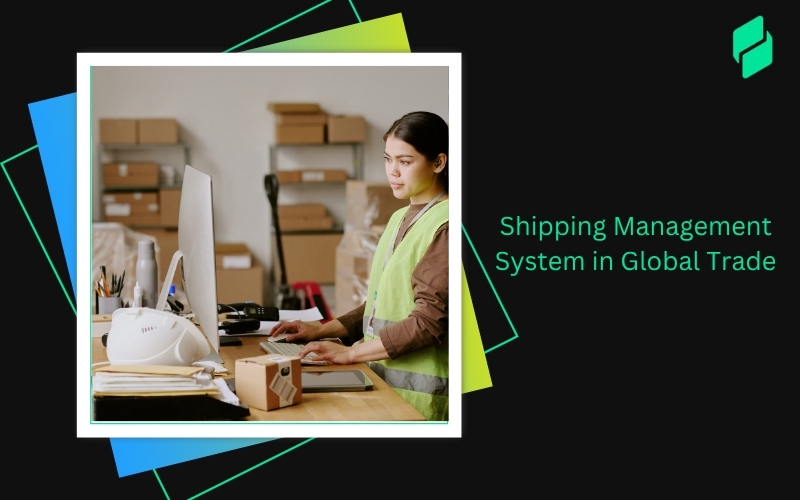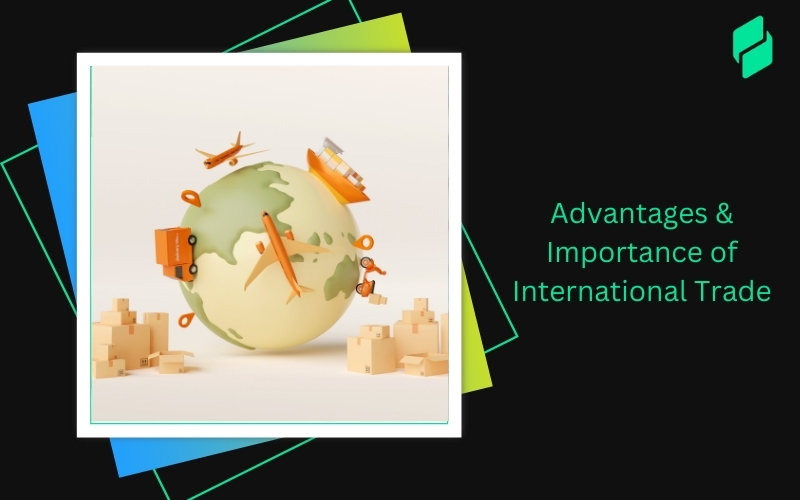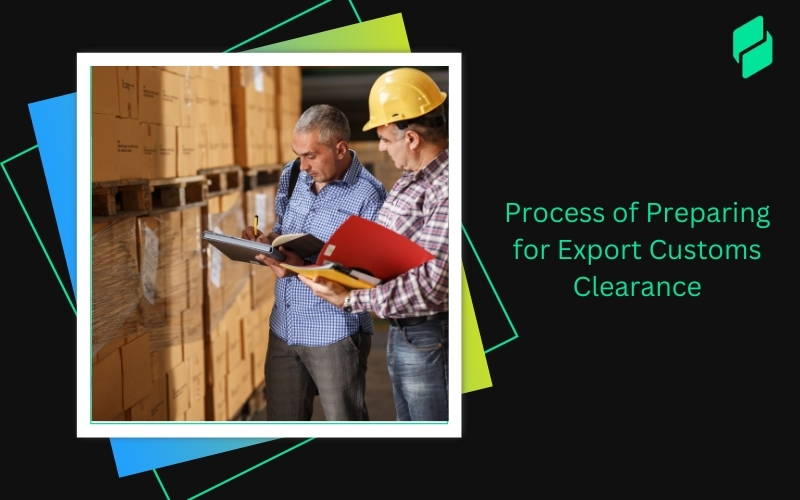Optimize your business: use unlimited savings with Pazago fulfilled now!
Get Started ->In 2025, global trade is increasingly focused on compliance and accurate documentation. With increased global customs scrutiny, including growing audits between countries like India and the U.S., the risk of penalties and delayed clearances is rising. In March alone, U.S. Customs identified $310 million in unpaid duties and fees from 71 audits.
A well-prepared technical write-up is crucial in this context. It provides custom officials with detailed information about the shipment, including precise measurements, material composition, production methods, and technical parameters.
This blog looks into the essential components of a practical technical write-up for customs clearance and what documents are required for customs clearance. It outlines the critical information to include, such as product specifications, compliance certifications, and packaging details.
What is Customs Clearance?
Customs clearance is the process of obtaining permission from a country's customs authorities to move goods across international borders. This process involves verifying the goods being imported or exported, ensuring compliance with regulations, and making sure that all necessary duties and taxes are paid. Customs clearance ensures that shipments are legally compliant, secure, and eligible for delivery to their final destination.
Why is Customs Clearance Important?
Customs clearance plays a crucial role in the import or export of goods. The following are the points that explain the importance of customs clearance:
- Legal Compliance: Customs clearance ensures that the goods being transported comply with the laws and regulations of both the exporting and importing countries. This helps avoid legal issues and potential penalties.
- Security and Safety: Customs authorities check shipments to prevent illegal goods from entering the country, ensuring safety and security for citizens and businesses.
- Efficient Trade: Proper customs clearance helps simplify the import/export process by ensuring that products reach their destination without delays, reducing the likelihood of costly hold-ups at ports.
- Taxation and Duty Compliance: Customs clearance ensures that duties, taxes, and tariffs are properly calculated and paid, which helps governments collect revenue and maintain a fair trade environment.
- Risk Mitigation: Efficient customs clearance reduces the risk of damage, theft, or loss of goods, ensuring smoother logistics and better risk management.
What Documents are Required for Customs Clearance?
The required documentation for customs clearance can vary by country, but generally includes:
- Commercial Invoice: A detailed bill that provides information about the transaction, including the value, quantity, and description of the goods.
- Packing List: A list that describes the contents of the shipment, including the dimensions, weight, and type of packaging used.
- Bill of Lading (BOL): A document issued by a carrier that details the terms and conditions of the transportation agreement, including the consignee and consignor.
- Certificate of Origin: A document that verifies the country of origin of the goods, often required for customs duties or trade agreements.
- Import/Export Permits: Permits may be required depending on the type of goods being transported, especially for restricted or controlled items.
- Customs Declaration: A form provided by customs authorities detailing the specifics of the shipment, including its contents, value, and other necessary details.
- Insurance Certificate: Proof that the shipment is insured, protecting both the exporter and importer from losses during transportation.
- Taxpayer Identification Number (TIN): Required for the proper calculation and payment of taxes and duties.
- Other Documents: In some cases, special documents such as health certifications, phytosanitary certificates, or export licenses may be required, especially for agricultural or food products.
Understanding customs clearance is just the beginning. What often determines the outcome is the accuracy and clarity of the technical write-up.
Why Technical Write-Ups Matter in Customs Clearance?
A technical write-up for customs clearance is crucial for ensuring a smooth customs clearance process, particularly for complex shipments. Without a clear and detailed write-up, customs authorities may struggle to understand the purpose, compliance, or value of the goods, potentially causing delays, additional inspections, or even shipment rejection.
A well-prepared technical write-up provides customs officers with all the necessary details, facilitating quicker processing, reducing the risk of penalties, and preventing unnecessary storage fees, ultimately minimizing disruptions to your supply chain and protecting your business.
Key Benefits of a Technical Write-Up
- Improves Compliance: Provides detailed product information to meet the specific regulatory requirements of customs authorities in both the exporting and importing countries.
- Reduces Clearance Delays: Minimizes the chances of shipments being held up due to incomplete or unclear documentation.
- Prevents Misclassification: Ensures accurate product classification under the Harmonized System (HS) codes, reducing the risk of incorrect duty assessments.
- Supports Duty and Tax Accuracy: Helps customs officials calculate applicable duties and taxes correctly, avoiding overpayment or future penalties.
- Enhances Transparency: Builds trust with customs authorities by providing complete visibility into the product's material, design, and use.
- Strengthens Legal Defense: Acts as supporting evidence during audits or disputes, offering clarity on product specifications and compliance.
- Facilitates Consistency: Standardizes documentation across shipments, reducing internal errors and improving operational efficiency in export processes.
To understand their true impact, it’s important to look at what makes a technical write-up effective in the eyes of customs authorities.
Also Read: Best Practices for Customs Documentation and Labeling for International Shipments
Key Elements of an Effective Technical Write-Up for Customs Clearance

When it comes to customs clearance, providing accurate and detailed information about your product is essential. A well-prepared technical write-up ensures that customs officials have all the necessary details to process your shipment efficiently, avoid delays, and comply with regulations.
Let's break down the key elements that make up an effective technical write-up for customs clearance.
- Comprehensive Product Description
Start with a clear, concise overview of your product. What is it? What's it used for? What sets it apart from the crowd? Remember, you're writing for someone who might be seeing your product for the first time, so be thorough yet straightforward.
A well-crafted product description not only helps customs officials understand your product but also showcases its value and legitimacy, potentially speeding up the clearance process. Include:
- Overview of the product
- Intended use and application areas
- Unique selling points
Now that you've got a solid product description, let's get into the specifics.
- Detailed Technical Specifications
This section covers the technical details that are essential for customs clearance. Include:
- Precise measurements and dimensions
- Material composition
- Production methods and technology
- Technical parameters (e.g., voltage, current, power)
- By providing these specifications, you enable customs officials to accurately classify your product, ensure it complies with import regulations, and assess any potential safety risks.
- Operational Features
Customs officers need to understand how your product works. Outline:
- Core functionalities and capabilities
- User interface and controls
- Performance benchmarks and operational limits
Detailing your product's operational features helps customs officials understand its intended use and potential impact on the local market, which can be crucial for determining import eligibility and applicable duties or taxes.
- Installation Procedures
If applicable, provide clear, step-by-step installation instructions for your product, including:
- Required tools and equipment
- Pre-installation preparation
- Post-installation checks
Well-defined installation procedures ensure that your product is safe for use upon arrival, which is particularly important for complex machinery or equipment that may require careful handling or raise safety concerns.
- Maintenance Guidelines
Finally, include detailed maintenance guidelines for your product, such as:
- Routine maintenance schedules
- Troubleshooting common issues
- Replacement parts and component checks
- Long-term maintenance strategies
Clear maintenance instructions demonstrate that your product is designed for long-term use and complies with safety standards. This is especially crucial for products that may pose environmental or safety risks if not properly maintained.
With all these elements in place, let's explore why a well-prepared technical write-up is essential for a smooth customs clearance process.
Additional Supporting Documents to Enhance Your Technical Write-Up
While a solid technical write-up is crucial, understanding what documents are required for customs clearance is equally important to further smooth the process. These documents include:
- Test Reports: If your product requires specific safety or performance certifications, include the relevant test reports. These provide concrete evidence of your product's compliance with industry standards, potentially fast-tracking the approval process for products that might otherwise require additional scrutiny.
- Certificates of Origin: These crucial documents prove where your product was manufactured or substantially transformed. They can be essential for determining applicable tariffs and trade agreements.
- Compliance Certificates: Demonstrate that your product meets necessary regulatory standards. These certificates can cover various aspects such as safety, environmental compliance, or specific industry regulations.
You can store and easily access all these supporting documents using Pazago's document management system, ensuring you're always prepared for customs inspections.
Understanding the importance of a well-prepared customs clearance process sets the foundation for smooth international shipments. Now, let's explore some special tips to manage Indian customs clearance efficiently.
Also Read: Important Documents Required for Export
Special Tips for Indian Customs Clearance

When it comes to Indian customs, there are some unique aspects you should keep in mind while preparing your technical write-up for customs clearance. Here are some India-specific tips to ensure smooth sailing:
- HS Code Accuracy: Indian customs are particularly strict about correct HS (Harmonized System) code classification. Ensure your technical write up includes the precise 8-digit HS code for your product. Even a small error can lead to significant delays or penalties.
- Detailed Invoice: Indian customs require a comprehensive commercial invoice. In your technical write-up, include a detailed breakdown of costs, including FOB value, insurance, and freight charges separately.
- BIS Certification: For certain electronic and IT products, Indian customs require BIS (Bureau of Indian Standards) certification. If applicable, mention the BIS certification details in your technical write-up.
- FSSAI Clearance: If you're importing food products, your technical write-up should include details about FSSAI (Food Safety and Standards Authority of India) clearance. This is crucial for quick customs processing.
- Valuation Declaration: Indian customs are vigilant about undervaluation. Ensure your technical write-up includes a clear valuation declaration, especially for related-party transactions.
- End-Use Certificate: Indian customs may require an end-user certificate for certain goods, particularly those with dual-use potential. If applicable, mention this in your technical write-up.
- Language Preference: While English is widely accepted, having key points of your technical write-up translated into Hindi can sometimes expedite the process, especially at smaller ports.
By incorporating these India-specific details into your technical write-up for customs clearance, you'll be better prepared to manage the unique requirements of Indian customs.
As we’ve covered important tips for Indian customs clearance, it’s also crucial to look at the future trends that will shape customs procedures and compliance in 2025 and beyond.
Also Read: Essential Shipping Documents Every Importer and Exporter Should Know
Emerging Trends in Customs Compliance
As global trade continues to grow, customs clearance and compliance are undergoing significant changes. Several key trends are shaping the future of customs procedures, ensuring smoother and more efficient processes. Here are some of the most important developments businesses should watch for in 2025 and beyond:
- Digital Customs Processes
The adoption of electronic filing systems, digital signatures, and cloud-based documentation is simplifying customs workflows. These changes reduce paperwork, improve accuracy, and accelerate clearance times across borders.
- Automation in Documentation
AI and machine learning are beginning to automate key areas of export documentation, including data entry, validation, and anomaly detection. This shift reduces manual errors, increases consistency, and speeds up processing.
- Blockchain for Traceability and Security
Blockchain technology is gaining traction in customs and logistics. Its decentralized, tamper-proof structure enhances transparency in supply chains, supports regulatory compliance, and ensures traceability of goods throughout transit.
- Stricter Global Compliance Standards
Regulatory authorities are enforcing higher standards for documentation, product safety, environmental impact, and labor practices. Businesses will need to adopt stronger internal controls and ensure that all stakeholders meet global compliance expectations.
- AI-Powered Risk Assessment
Customs agencies are deploying AI to assess risks associated with shipments in real time. This allows for smarter, targeted inspections based on cargo profiles, reducing unnecessary delays while improving border security.
As customs procedures continue to change, efficient document management becomes even more critical. Let’s find out how Pazago offers an efficient solution for managing customs clearance documentation.
Interesting Read: Decoding the Customs Act 1962: A Comprehensive Guide
Efficient Document Management for Customs Clearance with Pazago

Navigating customs clearance can be complex, requiring precise documentation and adherence to regulations. The Pazago portal is designed to simplify this process by providing a centralized platform where you can efficiently manage and organize all essential technical documents required for smooth customs clearance.
Here’s how Pazago can help with customs clearance:
- Digital Document Management: Managing essential technical write-ups for customs clearance, such as product descriptions, technical specifications, and compliance certificates, can be complex and time-consuming. Pazago’s digital document management system securely stores these documents in one place, reducing errors, ensuring easy access, and supporting compliance during customs checks and audits.
- Real-Time Visibility: Pazago’s Visibility service offers real-time tracking, providing full transparency throughout the customs clearance process. Stay informed and ahead of any potential delays to ensure smoother operations.
- Centralized Communication: With multiple stakeholders involved in the customs clearance process, communication can often become fragmented. Pazago centralizes communication between exporters, freight forwarders, customs brokers, and other involved parties, reducing unnecessary back-and-forth.
- Integrated Inspection Management: Effective risk management is key to compliance. Pazago integrates inspection management by scheduling and tracking necessary assessments, whether it’s a product inspection, technical evaluation, or customs clearance check. This ensures exporters stay on top of required evaluations, reducing surprises and ensuring adherence to regulations.
- Financial Simplification: Technical write-ups for customs clearance often involve complex transactions, including currency exchanges and multiple payments. Pazago centralizes financial management, helping exporters track payments and manage currency exchanges efficiently. This ensures financial alignment with documentation requirements and simplifies overall export procedures.
Conclusion
Creating comprehensive technical write-ups for customs clearance doesn't have to be a headache. By understanding the key components and using the right tools, you can ensure your international shipments breeze through customs without a hitch.
Remember, a well-prepared technical write-up is your product's best advocate at the customs office. It speaks for your product when you can't be there in person, ensuring customs officials have all the information they need to process your shipment quickly and accurately.
Ready to improvise your approach to technical write-ups for customs clearance? Schedule a demo today and see how we can help your business expand globally, faster!


.png)








